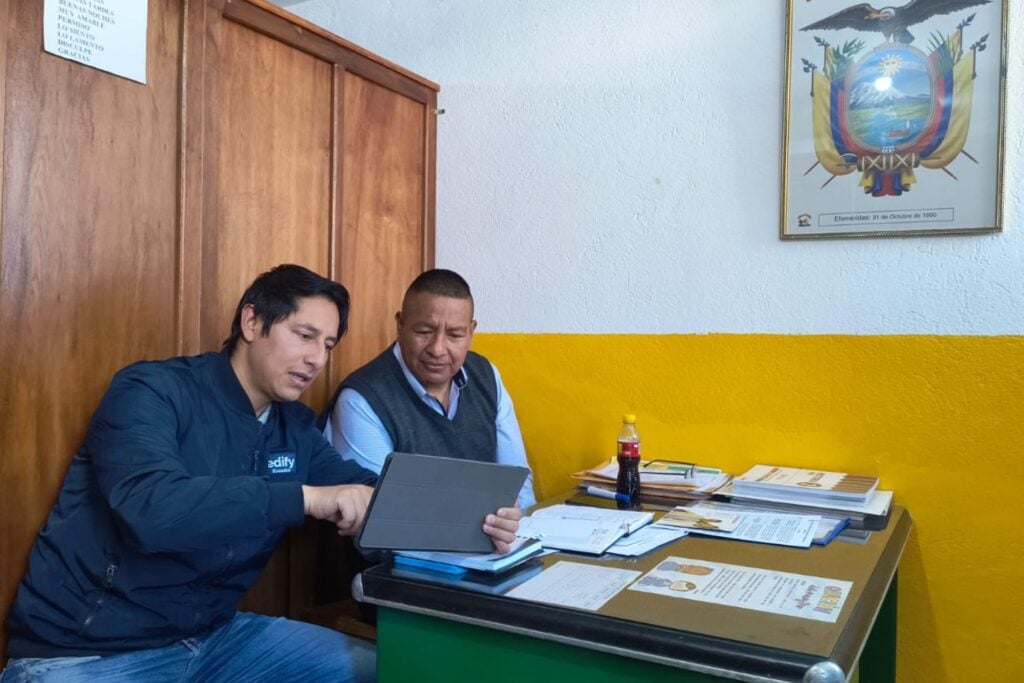With globalization, students around the world must be highly skilled and graduate with a quality education–or risk unemployment. Technology skills have become a necessity for employment in the global North. In the South, with strained markets and high unemployment, technology has emerged, but its use in education is lacking.
Globalization, technology, and education
One of the ways countries are preparing students for the future is through education technology. If students master technological skills earlier, then they increase their learning and employment potential.
It is also necessary to teach students how to skillfully use, navigate, and leverage technology. Digital citizens are those “utilizing information technology to engage in society.” Increasing learning, skills, and employment potential, while also establishing digital citizenship, is the goal of education technology.
It’s not only beneficial for students but teachers too.
Education technology carries the ability to improve student learning outcomes, address specific student learning needs, and collect real-time data to give teaching feedback. All which are important in the giving and receiving of quality education.
Education technology lacks for low-income countries.
But in low-income countries, the story is different. Students face high hurdles in closing the gap in technology accessibility and usage.
Many schools are in rural areas without access to electricity, let alone able to house computer labs or hire technology managers. Schools additionally lack access to technology and software in general and qualified teachers who know how to use it.
Although, providing the technology alone isn’t the difference-maker. Using technology effectively to help improve outcomes, skills, and teaching helps students clear the hurdles.
Integrating technology thoughtfully into curriculum fills important gaps in learning, simultaneously establishing a student’s digital citizenship. This sets them on a trajectory for meaningful employment and future opportunities.
Not just technology, but thoughtful integration
“When technology is integrated into lessons in ways that are aligned with good in-person teaching pedagogy [the method and practice of teaching], learning can be better than without technology.”
– Saro Mohammed, Ph.D. and Partner of The Learning Accelerator
Education leaders around the world recognize the value of education technology when used thoughtfully.
In The Brookings Institute’s article on the role of technology in the classroom, they proposed that when education technology:
- provides students access to learning or knowledge environments that are otherwise unavailable,
- facilitates and generates learning experiences that are meaningfully aligned with in-person learning experiences,
- personalizes, individualizes, and/or differentiates learning to each student’s pace and abilities,
- provides students with choice, agency, and ownership of their learning,
- and serves as an opportunity to develop skills associated with technology use,
there are massive increases in student learning outcomes.
Clearing hurdles
Integrating technology into education helps close the gap in 21st-century skills for under-served students. It allows them to become more employable and competitive with high-income country students.
As we look to a more connected future, disadvantaged students can now be on the same track. Students can learn the same things at the same time rather than striving to catch up.
Connected classrooms
Education technology is blazing ahead and deploying new technology to under-connected regions of the world.
Adaptive learning software has allowed teachers to receive real-time feedback that addresses specific student’s learning needs. Valuable feedback like this helps increase learning and knowledge potential and provides vital teacher support by analyzing teaching methods and practices.
Online education resources like Khan Academy and e-libraries give access to current curriculum. This fills a desperate need for many schools where textbooks are 30-40 years old, too expensive to buy, or where libraries are non-existent.
Mobile classrooms, digital textbooks, critical thinking software, internet routers, and more are paving the way. This is only the beginning of creative solutions to eliminate the hurdles disadvantaged students face.
With these emerging advances, it’s possible for thoughtful technology integration in low-income countries. Classrooms in Liberia, Peru, and Northeast India can now access the same technology as those in America, Canada, and Australia. Students can increase their learning potential, strengthen their employability, and be equipped to break the cycle of poverty in their families, communities, and nations.



